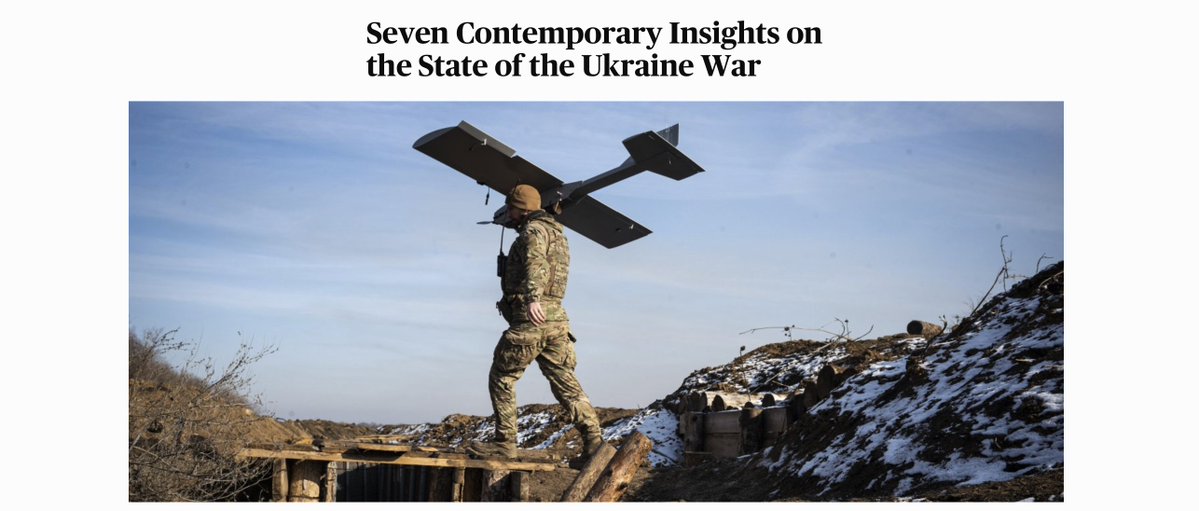The Ukrainian operation in Kursk is almost one week into execution. As the Russians slowly but surely redeploy forces to seal off the breach in their border and attempt to push the Ukrainians back into #Ukraine, it is worth pondering the options the Ukrainians might have once they reach their limit of exploitation. 1/20 🧵🇺🇦

2/ Like all military operations, this will have been planned as a multiphase operation, including the prelude shaping operations. These would have included intelligence collection, force preparation, deception, operational security, logistics and other aspects necessary to prepare the Ukrainian force for battle.
3/ Other phases will have been planned, including the ‘break in’ and ‘break through’ battles, ongoing exploitation and consolidation phases. These phases will have a range of forces and support elements applied to each.
4/ The Ukrainian’s the first phase, the ‘break in’ and ‘break through’ are complete. They are currently in an ‘exploitation’ phase. Many operations also normally include a ‘limit of exploitation’ governed by terrain, logistics and reaction of the enemy, as well as the objectives of the operation.
5/ What might be Ukraine’s strategic options once they reach their limit of exploitation? I think they probably have three options. Each will have minor branch plans, as well as opportunities and risks.
6/ Option 1 is for the Ukrainians to consolidate on the terrain they have seized so far and then defend it until some form of negotiation takes place. This is the highest risk option because the Ukrainian dispositions feature multiple small salients which would be easily cut off and destroyed by even a semi-competant Russian commander.

7/ The high probably of losing a large number of forces in this scenario makes it a strategic & political liability. Ukraine could lose battalions and brigades, as well as artillery, EW and air defence it could not afford to lose. This option, should it go bad, would also squander the very positive strategic messaging that has been generated by the Ukrainian surprise attack into Russia.
8/ The objective for this option would be to continue posing a significant risk to Russian sovereignty and critical assets, and constitute a draw for Russian forces from Ukraine. It might also provide Ukraine some leverage if forced into negotiations in the near future. It is questionable whether the downside risks of this option are worth the return however.
9/ Option 2. The 2nd option is for the Ukrainians to undertake a partial withdrawal from the territory it has seized, back to ground that is more defensible. This is a medium risk option, with a decreased risk of Option 1.
10/ This would rely on the Ukrainians conducting a withdrawal into pre-designated terrain that is easier to defend, requires a smaller quantity of troops to defend, and is able to be supported by fires, logistics and other functions more effectively.
11/ This option would also ensure that more troops could be reallocated after the operation to other activities, be they defending in the Donbas or subsequent cross-border attacks into Russia where there is an opportunity to do so.
12/ Option 2 allows #Ukraine to maximise the political and strategic benefits of the strategic shock, while reducing the risks of losing that combat force. It would still require large numbers of combat and support troops to defend the seized Russian territory, and would demand a major engineer effort to build minefields and other obstacles, trenchlines and deep bunkers and logistic storage locations.
13/ The objective for this option would be to continue posing a risk to Russian sovereignty, comprise an ongoing draw for Russian forces from #Ukraine, and to give #Ukraine some leverage if forced into negotiations in the near future. The humilitation of Putin and his military is also important. The risks of this opportunity might be worth the potential gains.

14/ The third option for #Ukraine would be to fully withdraw back to the international border between #Russia and #Ukraine. This would permit Ukraine to maximise the political and strategic benefits of operation into Russia while preserving a large body of experienced combat troops that might be employed on subsequent offensive operations in 2024 and 2025.
15/ By choosing this option the Ukrainians would be messaging to the Russians that “we can invade and hurt your country if we choose, but we have no wish to occupy our neighbours”. While the Ukrainian invasion may allow Putin to reinforce his point to Russians about the ‘threat from NATO’, he also appears weak because he was not able to punish those who conducted the operation in Kursk.
16/ The objective for this option would be to humilitate Putin, preserve Ukrainian combat forces, while sending a strategic message to Ukraine’s supporters that that can go on the offensive and do so in a manner which does pose an existential risk to the ground forces conducting the operation.
17/ Given the preservation of Ukrainian forces under this option, it will probably be the one that gives Zelenskyy the best domestic political boost and improvement in Ukrainian morale.
18/ A range of factors will have an influence on which option the Ukrainian government chooses. These factors include how the Russians change their force posture in Ukraine (including in the Donbas), the Russian response in Kursk, domestic and international political considerations, and the sustainability of the operation itself.
19/ You can read a much more detailed examination of this issue in my new (free) post at Futura Doctrina. End. mickryan.substack.com/p/kursks-next-…


20/ Thank you to the following, whose links and images where used in this thread: @War_Mapper @Militarylandnet @emilkastehelmi @UAControlMap @DefenceU @TheStudyofWar @criticalthreats @Maks_NAFO_FELLA
• • •
Missing some Tweet in this thread? You can try to
force a refresh













